Understanding Non-Surgical Eye Lifts: Myths vs. Facts
Non-surgical eye lifts have gained popularity as less invasive alternatives to traditional blepharoplasty and brow lift surgeries. Promising immediate rejuvenation with minimal downtime, these treatments appeal to patients seeking subtle improvement without the risks and recovery time of surgery. However, questions remain about their true effectiveness, longevity, and how they compare to surgical procedures. This article delves into the variety of available non-surgical eye lift techniques, analyzes clinical and statistical data on their outcomes, and provides evidence-based insights to help readers make informed decisions about these cosmetic options.
Overview of Non-Surgical Eye Lift Treatments and Mechanisms
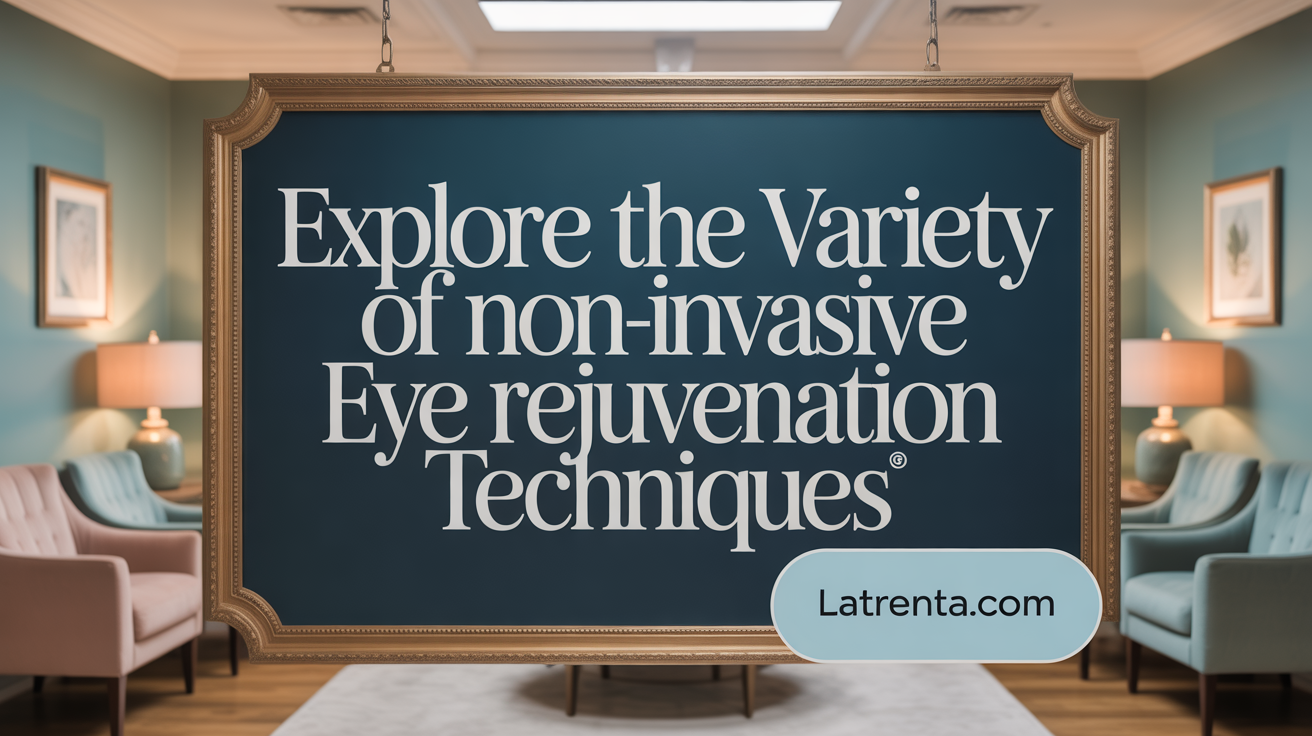
What are different types of non-surgical eye lifts?
Non-surgical eye lift procedures encompass a variety of treatments designed to improve eyelid appearance without surgery. These include injectable options such as Botox and dermal fillers, as well as skin-tightening techniques like laser resurfacing, radiofrequency (RF) treatments like Ultherapy and ThermiTight, and topical solutions such as FDA-approved eye drops. Each treatment targets different aspects of aging, including skin laxity, wrinkles, and eyelid drooping.
Other non-invasive options include PRP therapy, which uses the patient’s own blood to stimulate skin rejuvenation, and chemical peels or microneedling for textural improvements. These methods are often combined for personalized care, sometimes delivering noticeable effects in just one session.
How do Botox, dermal fillers, PRP, radiofrequency, and laser therapy work?
Botox is a neuromodulator that relaxes the muscles responsible for wrinkles, especially in the forehead and around the eyes. By reducing muscle activity, Botox smooths fine lines and can create a subtle brow lift, making the eyelids appear more open.
Dermal fillers use skin-plumping solutions like hyaluronic acid or collagen-stimulating agents to fill in hollows and wrinkles around the eyelids. Popular brands like Juvederm and Restylane temporarily restore volume, lifting tired-looking skin and enhancing the eye contour.
PRP (platelet-rich plasma) involves drawing the patient’s blood, processing it to concentrate growth factors, and injecting it into areas needing rejuvenation. Although still under study, PRP aims to stimulate collagen production and improve skin texture.
Radiofrequency treatments such as Ultherapy and ThermiTight generate controlled heat within the skin, stimulating collagen growth over time. Results can include tighter, smoother skin that reduces sagginess.
Laser therapy, including fractional CO2 laser or Fraxel, removes the outer damaged skin layers, promoting remodeling and new skin growth. While effective for fine lines, laser treatments usually require some downtime due to redness and peeling.
How do these treatments create lifting and rejuvenation effects?
Most non-surgical eye lift options aim to mimic the effects of a surgical lift by tightening or plumping the skin. Botox relaxes muscles that cause repetitive lines and can subtly elevate the brow, opening the eyes.
Dermal fillers restore volume and support skin, helping lift sagging eyelids and improve contours. RF and laser therapies induce collagen production, which increases skin firmness and elasticity, reducing droopiness.
Combination approaches often produce more noticeable results, with some patients seeing benefits from multiple sessions. While effects are usually immediate and natural-looking, they are temporary, lasting from several months to a couple of years depending on the treatment.
Do non-surgical eye lifts work?
Non-surgical eye lift procedures can offer modest improvements, particularly for early signs of aging or minor eyelid concerns. Techniques like laser skin resurfacing, skin tightening, and injectables improve eyelid shape, texture, and firmness. For many, these treatments are appealing due to their minimal downtime and lower cost compared to surgery.
However, they do not produce the dramatic or long-lasting changes provided by surgical eyelid lifts such as blepharoplasty. For significant drooping, excess skin, or advanced aging, surgery remains the most effective option. Still, non-surgical treatments can serve as effective interim solutions or be combined with surgical procedures for enhanced results.
In conclusion, while non-invasive eyelid rejuvenation techniques are helpful for immediate, subtle improvements, their ability to fully replace surgical options depends on individual conditions and desired outcomes. Consulting with a qualified specialist can help determine the best approach for each patient.
Comparative Effectiveness and Durability of Popular Non-Surgical Methods
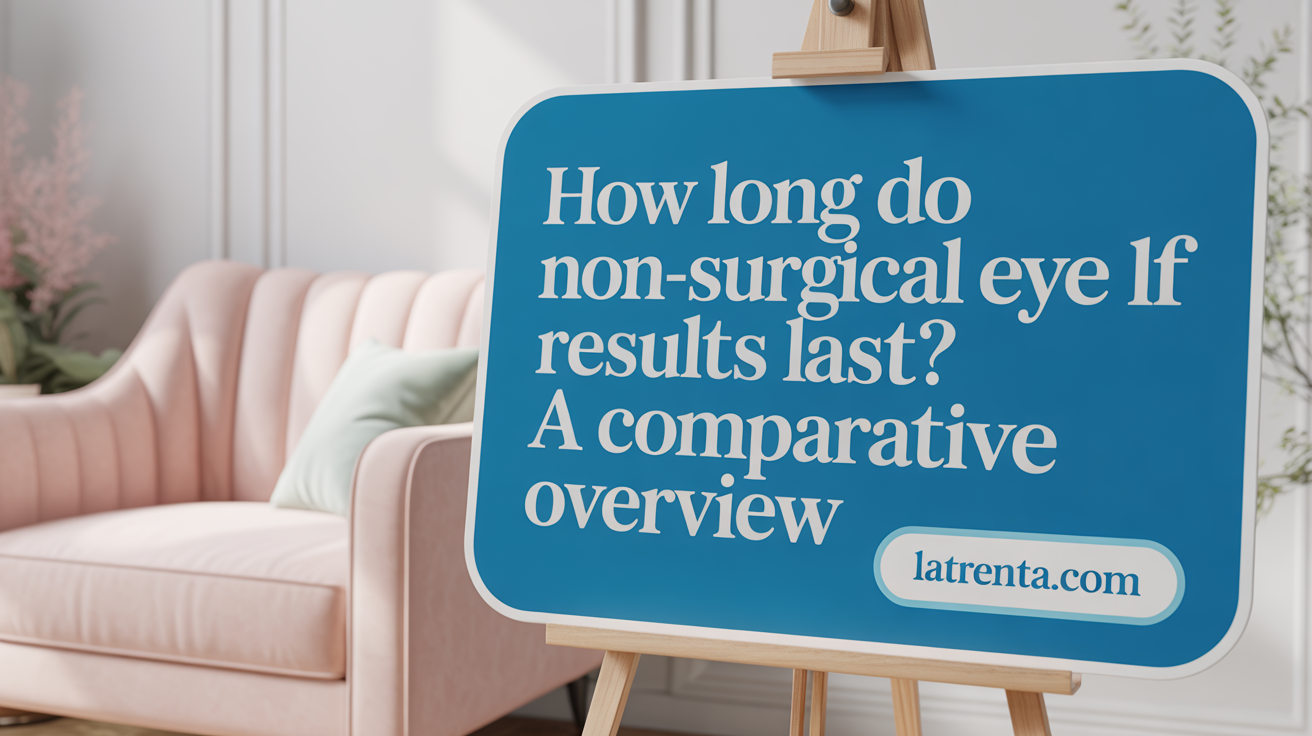 Non-surgical eye lift techniques encompass a range of procedures aimed at rejuvenating the eyelids and surrounding areas without invasive surgery. These include laser skin resurfacing, radiofrequency (RF) treatments like Ultherapy, dermal fillers, platelet-rich plasma (PRP) injections, and topical agents such as FDA-approved eyedrops.
Non-surgical eye lift techniques encompass a range of procedures aimed at rejuvenating the eyelids and surrounding areas without invasive surgery. These include laser skin resurfacing, radiofrequency (RF) treatments like Ultherapy, dermal fillers, platelet-rich plasma (PRP) injections, and topical agents such as FDA-approved eyedrops.
Laser resurfacing and RF therapies work by stimulating collagen production from within the skin. Laser treatments like fractional CO2 or Fraxel can improve fine lines, skin texture, and laxity, showing noticeable results within days and lasting about 6 to 12 months. Ultherapy uses ultrasound energy to tighten skin, with effects persisting approximately 1 to 2 years, depending on individual aging factors.
Dermal fillers, such as Restylane and Juvederm, are injected to restore volume, smooth wrinkles, and define the eyelid area. The results are immediate but typically last between 6 to 12 months, although some formulations and newer techniques may extend this to up to a few years. PRP therapy, which involves injecting a patient’s own platelet-rich plasma, promotes collagen growth, with benefits often seen after several sessions, lasting from a year to longer with regular treatments.
Topical options like Upneeq, an FDA-approved eyedrop, temporarily elevate eyelids by stimulating muscle contraction, offering quick but short-lived improvements that last a few hours to months.
Compared to surgical options like blepharoplasty—which physically removes or repositions eyelid tissue and can provide results lasting 7 to 10 years—non-surgical methods tend to be less effective for severe cases. They generally produce subtler, temporary improvements suitable for early signs of aging or for patients seeking less invasive options.
In summary, while non-surgical eye lifts can enhance appearance for a limited time and with minimal recovery, surgical procedures provide more dramatic and long-lasting results. The choice depends on individual goals, the severity of aging signs, and willingness to undergo potential repeat treatments.
Duration and Longevity: How Long Do Non-Surgical Eye Lifts Last?
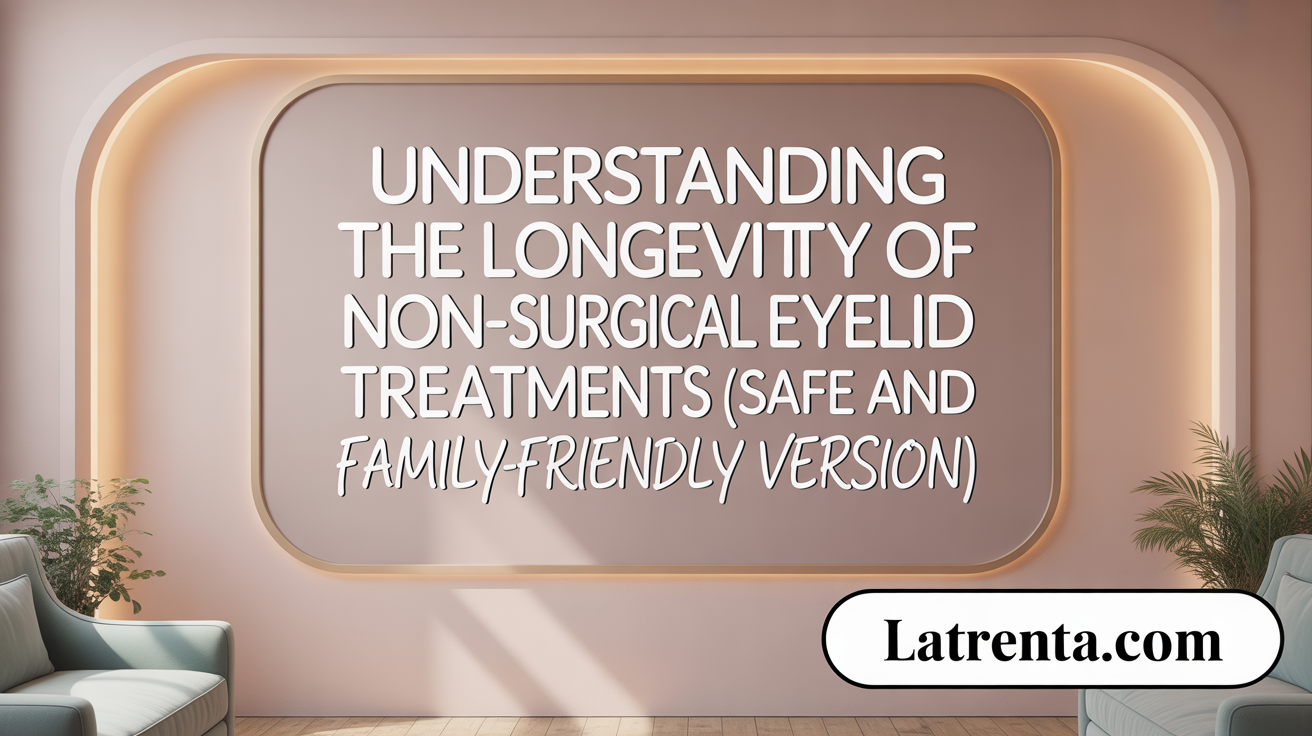 Non-surgical eye lifts offer a quick and effective way to rejuvenate the appearance of the eyelids without invasive surgery. The results from these treatments are usually immediate, giving patients a refreshed look right after the procedure.
Non-surgical eye lifts offer a quick and effective way to rejuvenate the appearance of the eyelids without invasive surgery. The results from these treatments are usually immediate, giving patients a refreshed look right after the procedure.
The duration of these effects depends on the specific treatment used. For example, dermal fillers such as Restylane or Juvederm typically last between 6 to 12 months. This means the plumping and smoothing effects may gradually diminish as the body metabolizes the filler.
Botox, a neuromodulator, generally maintains its muscle-relaxing effects for about 3 to 6 months. This temporary paralysis reduces fine lines and can lift the eyelids slightly for a few months before touch-up injections are needed.
Radiofrequency treatments like Thermage and Ultherapy stimulate collagen production, leading to skin tightening and lifting. Results from Thermage can last up to two years, while Ultherapy effects tend to be visible for around 1 to 2 years, depending on individual skin response.
Laser resurfacing treatments improve skin texture and elasticity, with their benefits lasting typically between 6 months to a year, contingent on skin repair and aging pace.
The longevity of these treatments is influenced by several factors, including age, skin type, lifestyle habits, and genetics. For instance, sun exposure, smoking, and overall skin care routines can accelerate the breakdown of injected or stimulated collagen, shortening treatment effects.
Most patients require periodic maintenance to preserve their results. For dermal fillers, this may mean repeated injections every 6 to 12 months. Botox treatments often need to be repeated every 3 to 6 months, depending on patient response.
Lifestyle choices, like protecting the skin from sun damage and avoiding certain medications that thin the blood, also play a role in maintaining outcomes. Regular skincare, sun protection, and healthy habits can extend the duration of the lifted or rejuvenated appearance.
In summary, non-surgical eye lifts provide noticeable improvements quickly, but their effects are temporary. The specific longevity varies by treatment type and individual factors, with some lasting less than half a year and others up to two years or more.
Scientific Evidence and Clinical Trial Outcomes for Eye Lift Products
Do non-surgical eye lift treatments work?
Non-surgical approaches like laser resurfacing, dermal fillers, and skin-tightening procedures can improve the appearance of the eyelids temporarily. Treatments such as Botox and fillers may smooth fine lines, restore volume, and subtly lift the eyelid area. However, these methods generally do not generate dramatic, long-lasting changes on their own.
For harsher signs of aging, such as significant drooping or excess skin, surgical options like blepharoplasty tend to produce more substantial and enduring results. Non-invasive treatments are often chosen for minor concerns or as interim steps while waiting for surgical procedures or if surgery isn’t suitable.
Combining several non-surgical techniques can enhance overall appearance, but they usually cannot fully replace the dramatic improvements traditional surgery provides. The effectiveness of these treatments depends heavily on individual conditions, skin quality, and the aesthetic goals of the patient.
Where can I find credible medical and scientific research on non-surgical eye lift treatments?
Trustworthy sources for information include peer-reviewed medical journals such as the Journal of Cosmetic Dermatology, Dermatologic Surgery, and the Aesthetic Surgery Journal. These publications regularly feature studies evaluating newer treatments like laser therapy, radiofrequency, dermal fillers, and thread lifts.
Clinical trial registries like ClinicalTrials.gov list ongoing and completed research projects, providing data on various non-surgical procedures and their outcomes. Medical associations, including the American Society for Dermatologic Surgery and the American Society of Plastic Surgeons, publish evidence-based guidelines and summaries.
Institutions like the Massachusetts Eye and Ear Infirmary and collaborations with research institutes add further peer-reviewed data on long-term results.
Consultation with board-certified dermatologists or plastic surgeons—who are updated with current research—can help individuals access reliable information about the longevity and safety of these treatments.
Overview of Non-surgical Eye Lift Treatments and Their Outcomes
| Treatment Type | Typical Duration of Effect | Description | Notes |
|---|---|---|---|
| Botox | 3–4 months | Relaxing muscles to smooth wrinkles and lift brows | Quick results, requires regular touch-ups |
| Dermal Fillers | 6–12 months | Plumping solutions to fill wrinkles and restore volume | Enhances eyelid and brow shape, needs maintenance |
| Laser Resurfacing | Up to 10 days downtime | Removing surface layers of skin for smoother texture | Long-lasting but with longer recovery |
| Radiofrequency Tightening | Up to 2 years | Stimulating collagen to tighten skin | Gradual results, non-invasive |
| PRP (Platelet-Rich Plasma) | Varies | Using patient’s blood to promote tissue rejuvenation | Still under research, used with other treatments |
While these procedures provide noticeable initial improvements, their results are temporary, typically lasting from a few months up to two years. Regular maintenance sessions are necessary to sustain the aesthetic benefits.
It is essential for patients to consult with qualified healthcare providers to choose the most suitable treatment plan, consider potential risks, and understand the expected longevity of outcomes based on their individual needs.
Safety, Side Effects, and Patient Suitability for Non-Surgical Eye Lifts
Does non-surgical eye lift work?
Non-surgical eye lift procedures can improve the appearance of the eyelids, but their effectiveness varies depending on the individual and chosen treatment. Options like laser resurfacing and skin tightening treatments such as Ultherapy or ThermiTight can offer subtle improvements in skin firmness and texture. Dermal fillers and Botox can temporarily enhance eyelid contours and reduce fine lines, creating a more refreshed look.
However, these treatments generally do not deliver the dramatic or long-lasting results that surgical options like blepharoplasty provide. For individuals with significant drooping, excess skin, or pronounced aging signs, surgery remains the more effective choice for substantial rejuvenation.
Patients often opt for non-surgical solutions as they are less invasive, involve minimal downtime, and serve as interim or supplementary treatments. When used appropriately, they can enhance overall appearance and delay the need for surgery. The success of these treatments depends on careful case selection and realistic expectations.
Ultimately, consulting with a qualified healthcare provider is essential. They can assess the specific condition of your eyelids and recommend the most suitable approach to meet your aesthetic goals.
Cost Considerations Across Non-Surgical Eye Lift Options
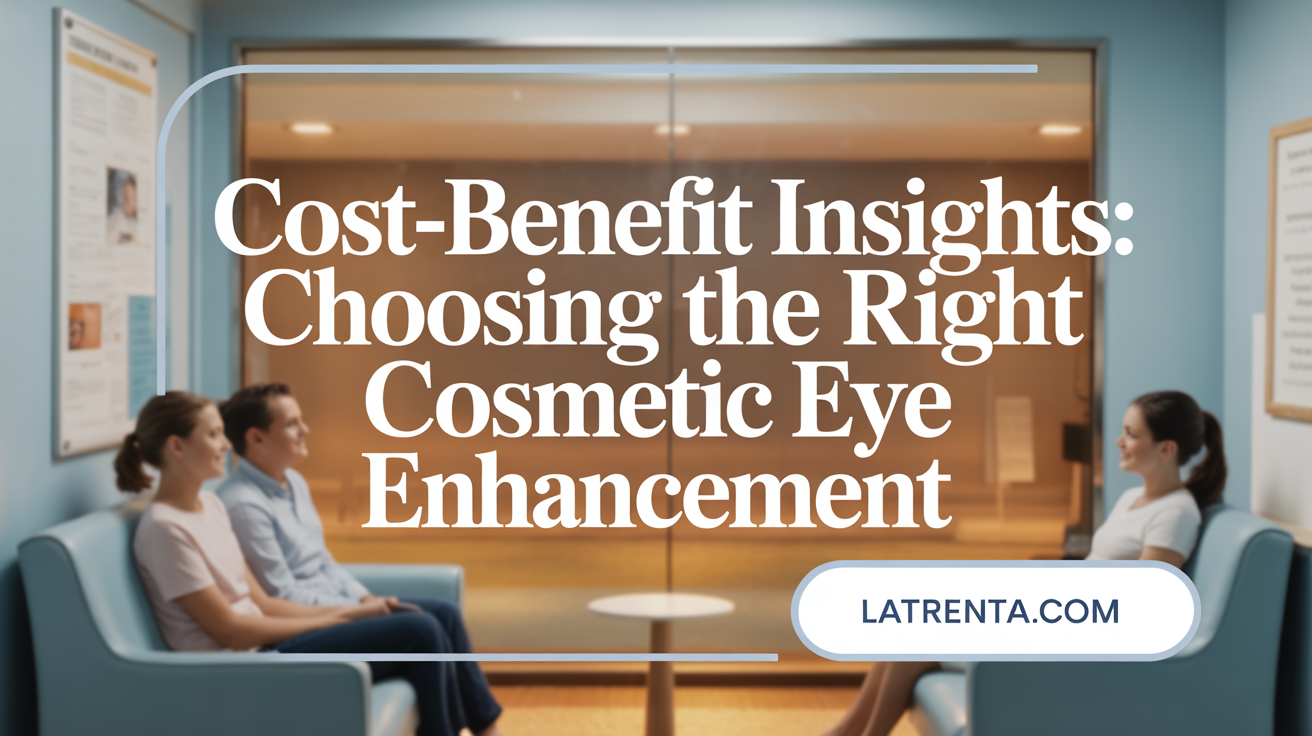 When exploring non-surgical eye lift treatments, understanding their costs can help in making informed choices. Botox treatments typically average around $376 per session, making it a popular and cost-effective option for quick, temporary results. Dermal fillers cost between $682 and $915 per syringe, with results lasting approximately six to nine months. PRP injections, which stimulate skin rejuvenation, have an average price of $683 per syringe.
When exploring non-surgical eye lift treatments, understanding their costs can help in making informed choices. Botox treatments typically average around $376 per session, making it a popular and cost-effective option for quick, temporary results. Dermal fillers cost between $682 and $915 per syringe, with results lasting approximately six to nine months. PRP injections, which stimulate skin rejuvenation, have an average price of $683 per syringe.
More advanced radiofrequency treatments like Ultherapy usually cost about $1,802 per session and can provide results lasting up to two years. Laser skin resurfacing generally ranges around $2,071 per session, offering longer-term improvements but with a higher price tag.
The costs influence how often patients seek treatments. For example, Botox's short duration means frequent appointments every 3 to 4 months, while Ultherapy and laser treatments might only require maintenance once every 1 to 2 years. Patients often weigh their budget against the desired longevity and depth of results when choosing a procedure.
| Treatment Type | Average Cost | Duration of Results | Additional Notes |
|---|---|---|---|
| Botox | $376 per treatment | 3-4 months | Best for fine lines and brow lift effects |
| Dermal Fillers | $682-$915 per syringe | 6-9 months | Restores volume and shape |
| PRP | $683 per syringe | Variable | Promotes skin rejuvenation |
| Ultherapy | About $1,802 per session | Up to 2 years | Stimulates collagen production |
| Laser Therapy | Around $2,071 per session | Several years with maintenance | Improves skin texture and tightness |
Considering the cost, many choose treatments based on their desired longevity and budget. Short-term options like Botox are affordable for quick fixes, while more costly procedures such as laser therapy may offer longer-lasting results — but require a greater investment upfront.
Combining Non-Surgical and Surgical Treatments for Optimal Outcomes
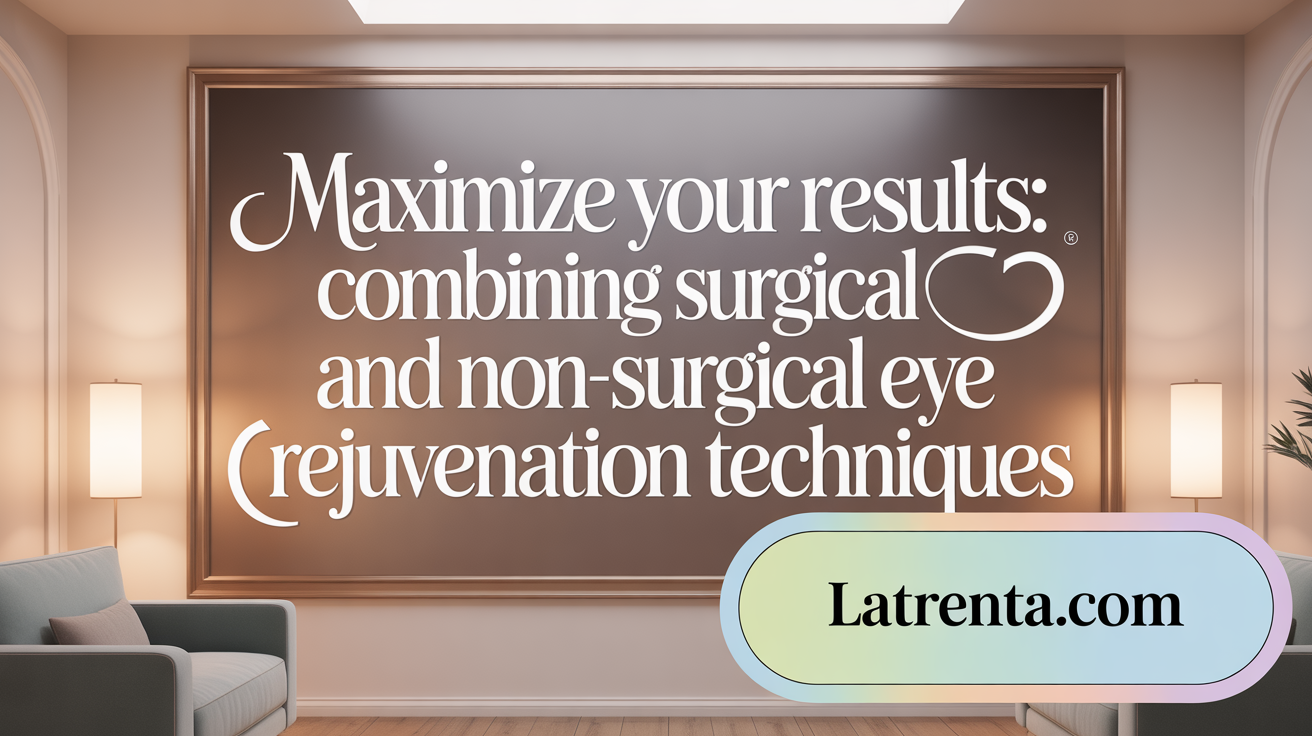 Many patients seek a balance between minimally invasive procedures and traditional surgery for eyelid rejuvenation. Non-surgical treatments like Botox, dermal fillers, laser resurfacing, and radiofrequency therapies often serve as effective options to improve eyelid appearance temporarily and with minimal downtime.
Many patients seek a balance between minimally invasive procedures and traditional surgery for eyelid rejuvenation. Non-surgical treatments like Botox, dermal fillers, laser resurfacing, and radiofrequency therapies often serve as effective options to improve eyelid appearance temporarily and with minimal downtime.
These treatments can complement surgical procedures such as blepharoplasty, especially when combined in a tailored plan. For example, Botox may be used to relax muscles and reduce fine lines around the eyes, while dermal fillers restore volume and improve brow contours. Laser skin resurfacing can address fine lines and skin laxity, enhancing the overall youthful look.
When a patient has mild to moderate aging signs, non-surgical methods may be sufficient to achieve desirable results. Combination approaches are particularly recommended when aiming for a natural, refreshed appearance without the risks and recovery associated with surgery. This integrated treatment plan can sometimes produce noticeable improvements in just one session.
However, non-surgical lifts are not without limitations. They typically do not provide the dramatic, long-lasting results of surgical eyelid lifts, especially when there is significant excess skin or pronounced sagging. Surgical blepharoplasty remains the most effective solution for more severe cases, offering permanent removal of excess tissue.
In short, while non-surgical eyelift options enhance and support surgical results, they are generally best suited for minor concerns or as interim treatments. A thorough consultation with an experienced specialist can determine the ideal combination tailored to individual needs.
**For more information, search
Factors Influencing Effectiveness and Longevity of Treatments
What factors influence the effectiveness and longevity of non-surgical eye lift procedures?
The success and lasting results of non-surgical eye lift treatments depend on several interconnected factors. The type of treatment chosen plays a significant role; for example, Botox generally lasts about three to four months, while dermal fillers can provide benefits lasting between six to nine months. Laser and radiofrequency treatments like Ultherapy or Thermage tend to offer longer-term improvements, often up to two years.
Skin quality and patient age are crucial components. Younger individuals with more elastic skin are more likely to experience better outcomes and longer-lasting effects. Conversely, aging skin with diminished elasticity may require additional maintenance or combined treatments for optimal results.
The expertise of the practitioner performing the procedure is vital. Skilled practitioners are better equipped to deliver precise, natural-looking results and minimize potential side effects. Proper technique and understanding of facial anatomy help maximize benefits.
Post-treatment care also influences how long results last. Adhering to recommendations such as avoiding excessive sun exposure, using proper skincare, and following specific guidelines provided by the practitioner can significantly extend the duration of the improvements.
Individual lifestyle choices—like smoking, alcohol consumption, diet, and stress levels—impact skin condition and treatment durability. Additionally, personal factors such as metabolic rate and skin regeneration capacity affect the longevity of the outcomes.
In summary, while non-surgical eye lift treatments can dramatically enhance appearance, their effectiveness and lifespan are shaped by treatment type, skin health, practitioner skill, aftercare, and lifestyle habits. Staying committed to good skincare and periodic touch-ups can help maintain a youthful, refreshed look over time.
Emerging Technologies and Future Directions in Non-Surgical Eye Lifts
Recent developments in non-surgical eye lift treatments point to promising future options that aim to improve effectiveness, safety, and longevity.
One notable advancement is the ongoing clinical trial NCT04831047, which is assessing the effects of the FDA-approved eye drop Upneeq on eyelid position. This medication, which temporarily lifts droopy eyelids by stimulating the muscles, has shown significant improvement in eyelid height and visual fields in trials involving over 140 patients. The trial also evaluates its impacts on eye redness and patient perception, aiming to expand non-invasive treatment options.
Beyond eye drops, innovative procedures such as polydioxanone (PDO) thread lifts are gaining attention. These dissolvable threads are inserted under the skin to stimulate collagen production and provide a subtle lift of the eyelid and surrounding areas. Combining such threads with microneedling, which creates micro-injuries to trigger natural skin healing and collagen synthesis, offers a minimally invasive approach to skin tightening and rejuvenation.
Looking ahead, researchers are investigating ways to enhance the durability of non-surgical treatments, with some modalities like Thermage already offering skin tightening effects lasting up to two years. Ongoing studies aim to improve safety profiles and efficacy, making treatments more reliable with fewer side effects.
In summary, advancements in clinical trials and emerging technologies suggest a future where non-surgical eye lifts will become more effective, sustainable, and accessible, catering to patients seeking less invasive options with long-lasting results.
Summary: Balancing Expectations with Evidence for Non-Surgical Eye Lifts
Non-surgical eye lifts offer a range of minimally invasive options to refresh and subtly rejuvenate the eye area with the benefit of minimal downtime and fewer risks compared to surgery. Treatments such as Botox, dermal fillers, laser resurfacing, and newer options like the FDA-approved Upneeq eyedrop can produce immediate but temporary results that require maintenance. Scientific data supports their safety and efficacy for mild enhancements, though dramatic and long-lasting improvements still predominantly rely on surgical eyelid lifts. Patients should weigh factors including cost, longevity, potential side effects, and their individual anatomy and goals when choosing among treatments. Continuous advancements and research promise further refinements, but realistic expectations remain essential for satisfaction with non-surgical eye lift outcomes.
References
- Nonsurgical Eye Lift: What Is It and Does It Work? - Healthline
- Investigation of the Longevity of the Endoscopic Midface Lift - PMC
- Nonsurgical Option for Eyelid Lift - Dermatology Times
- Non Surgical Eye Lift NYC, Lower Eyelid Lift - Dr. Michele Green M.D.
- Does A Non Surgical Eyelid Lift Work? (Before and After Photos)
- 6 Surprising Ways Strength Training Slows the Aging Process
- Comparing Blepharoplasty and Non-surgical Eye Lift Techniques
- Blepharoplasty vs Ultherapy brow lift or HiFu eye lift
